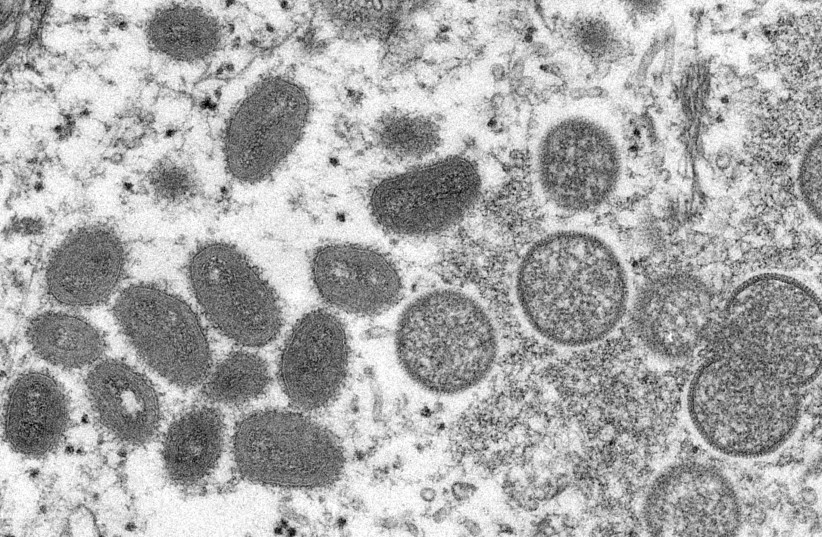A third case of monkeypox has been detected in Israel, the Health Ministry announced on Tuesday.
According to the Health Ministry, a man aged 34 arrived at Tel Aviv Sourasky Medical Center (Ichilov) with symptoms of the illness after returning from a trip abroad. The suspected case was confirmed as monkeypox after a lab test.
The Health Ministry called on those who have developed a fever and lesions and have returned from abroad or have been in close contact with a person who is suspected of having monkeypox to contact their attending physician.
The first case of monkeypox reported in Israel as part of the global outbreak was reported on May 20.
CDC raises alert to Level 2
The latest case in Israel comes as over 1,000 cases have been reported in 29 countries around the world since early May, according to the US Centers for Disease Control and Prevention (CDC).

On Monday, the CDC raised its alert on monkeypox to Level 2, advising travelers to practice enhanced precautions and avoid close contact with sick people and with dead or live wild animals.
Monkeypox may have been spreading undetected before current outbreak
Scientists have expressed concerns that the virus has been circulating for some time undetected before the current outbreak was first detected in early May.
Dr. Maria van Kerkhove, an infectious disease epidemiologist with the World Health Organization (WHO), stated on Thursday that the wide geographic scope of many sporadic case indicates that widespread human to human transmission is underway and has likely been circulating for several weeks, if not months.
According to the WHO, community transmission has been reported in multiple locations and health officials have not been able to determine how some of the cases were infected.
The WHO stated in a situation update on Saturday that the sudden outbreak suggests that there may have been undetected transmission in non-endemic countries for an unknown amount of time before recent outbreaks were detected.
How is monkeypox spread and what are the symptoms?
Monkeypox is transmitted from one person to another by close contact with lesions, bodily fluids, respiratory droplets and contaminated materials such as bedding, according to the World Health Organization.
The WHO has pointed out that many of the cases in this outbreak are not presenting with the classical symptoms for monkeypox.
Usually, monkeypox infection is divided into two periods, with an invasion period lasting up to five days characterized by fever, headaches, swelling of the lymph nodes, back pain, muscle aches and an intense lack of energy.
Then, usually within one to three days of appearance of fever, a rash appears, usually affecting the face and the palms of the hands and the soles of the feet. Oral mucous membranes, genitalia and the eyes can also be affected. The rash evolves from lesions with a flat base (known as macules) to slightly raised firm lesions (papules) to lesions filled with clear fluid (vesicles) to lesions filled with yellowish fluid (pustules), before crusting, drying up and falling off.
In the current outbreak, cases have included genital and peri-anal lesions, fever, swollen lymph nodes, and pain when swallowing, with the rash focusing around the anus and genitals in some cases before spreading to other part of the body. In some cases in this outbreak, pustules have appeared before other symptoms, such as fever, and lesions have been seen at different stages of development, which is atypical of how monkeypox has presented historically.
Some of the cases have also included patients experiencing only one or two lesions, raising concerns that patients infected with monkeypox may be being misdiagnosed or may not be detected at all. The lesions may also be confused with lesions from sexually transmitted diseases.
The WHO stated that the public health risk posed by monkeypox at the global level is assessed to be moderate, as this is the first time that many monkeypox outbreaks have been reported at the same time in both non-endemic and endemic countries across widely disparate areas.
